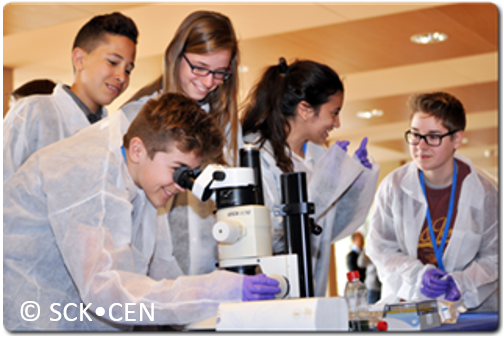Bioproduction of Class II hydrophobins with unique biospecific functionalities using Trichoderma species

Category
Ph D Defense
Date
2022-03-11 17:00
Venue
KU Leuven, Technologiecampus Gent - Gebroeders De Smetstraat 1, 9000 Gent
Belgie
Belgie
Promovendus/a: Tim Thysens
Promotor(en): Prof. dr. ing. Ilse Van De Voorde, Prof. dr. ir. Jan Van Impe
Hydrophobins (HFBs), produced by filamentous fungi, are amphiphilic cysteine-rich proteins of relatively low molecular weight showing unique physicochemical properties. HFBs are considered the strongest surface active proteins from microbial origin. By self-assembling at hydrophobic-hydrophilic interfaces, HFBs form an amphiphilic membrane and consequently reduce water surface tension and stabilize foams and emulsions at low concentrations. HFBs are also highly appreciated due to their ability to change the polarity of surfaces. HFBs are divided in two classes, namely Class I and Class II HFBs, based on differences in their hydropathy plots and solubility and morphology of the membranes, formed at interfaces. This study focused on Class II HFBs due to their exceptional high surface elasticity and easier purification compared to Class I HFBs, making them of significant economic value for personal care, pharmaceutical, medical and food applications. Industrial applications currently remain lacking despite their great potential due to a low production yield. Therefore, the goal of this study was to study the effect of several process parameters on the bioproduction of Class II hydrophobins, more specifically focusing on HFBI, expressed by Trichoderma reesei MUCL 44908, and Class II HFBs produced by IHEM 5437 belonging to the Trichoderma harzianum species complex.Results have shown that addition of antifoam during the bioproduction improved HFBI yield, although still a low HFBI yield was obtained using the native T. reesei MUCL 44908 fungal strain. However, a deeper knowledge was gained in the effect of several process parameters on the production of HFBI. Results have shown that Class II HFBs such as HFBI are excellent foam stabilizers, stabilizing single bubbles against disproportionation for long periods of time (up to 4 months) at a low concentration (0.025 w/v %) compared to industrial surfactants (e.g. sodium caseinate). Moreover, novel Class II hydrophobins produced by IHEM 5437 were discovered which are not yet described in literature and might exhibit even better functionalities. Applications in the cosmetics (e.g. foam stabilizer in shampoos) and pharmaceutical industry (e.g. enhancing bioavailability in hydrophobic drugs) are however more realistic than using Class II HFBs as bulk product in food applications since it is difficult to obtain a high HFB production yield while also taking the cost price into account.
All Dates
- 2022-03-11 17:00
Powered by iCagenda






